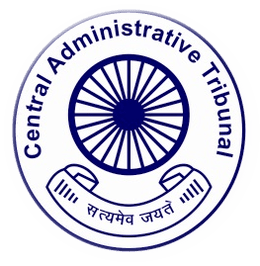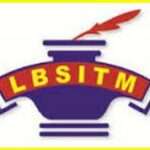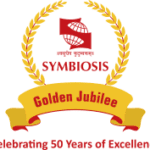The Central Administrative Tribunal (CAT) is an Indian tribunal established in 1985 under the Administrative Tribunals Act, 1985. It specializes in resolving disputes related to central government employee recruitment, service conditions, and other employment matters. Key features include exclusive jurisdiction, independence from the government, regional benches for accessibility, speedy dispute resolution, and the option for appeals to High Courts or the Supreme Court of India.

Structure and Organization of CAT
- Principal Bench: Located in New Delhi, it serves as the central hub with jurisdiction over central government matters.
- Regional Benches: Spread across the country, these handle cases within their territorial jurisdiction.
- Chairperson and Members: Led by a Chairperson, appointed by the President, and supported by Vice-Chairpersons, Judicial, and Administrative Members.
- Jurisdiction: CAT exclusively handles cases concerning central government civil servants and employees of central government-controlled organizations.
- Independence: CAT operates independently from the government to ensure impartiality.
- Speedy Dispute Resolution: It aims to provide quick and cost-effective resolution of employment-related disputes.
- Appeals: Decisions can be appealed to the respective High Court or the Supreme Court of India.
CAT Case Process and Procedure
- Filing Application: An aggrieved individual submits an application outlining the dispute and relief sought.
- Jurisdiction Review: CAT ensures the case falls under its exclusive jurisdiction for central government matters.
- Mediation (Optional): Mediation may be suggested to resolve disputes amicably.
- Case Documents: Both parties prepare case documents, including statements and evidence.
- Issue Framing: Specific issues in dispute are defined for the proceedings.
- Hearing: The case is heard, with arguments, witnesses, and evidence presented.
- Decision: CAT issues a judgment, including potential remedies like reinstatement or compensation.
- Appeals: Parties can appeal CAT decisions to the High Court or the Supreme Court.
- Order Execution: The responsible government department or organization implements CAT’s orders.
Advantages of Approaching CAT
- Specialized Expertise: CAT specializes in administrative matters, particularly those related to central government employees and organizations. The tribunal’s expertise and focus make it well-suited to address employment disputes effectively.
- Speedy Resolution: CAT aims to provide swift justice, expediting the resolution of cases compared to traditional civil courts, which can have lengthy proceedings.
- Exclusive Jurisdiction: CAT has exclusive jurisdiction over central government employment disputes. This exclusivity ensures that cases are handled by a specialized forum familiar with the intricacies of government employment.
- Reduced Costs: Litigating in CAT can be more cost-effective than pursuing cases in higher courts. The tribunal’s procedures are designed to reduce legal expenses.
- Accessibility: CAT has regional benches across India, making it accessible to individuals from various regions, reducing the need to travel long distances for legal proceedings.
- Impartiality: CAT is intended to operate independently from the government, enhancing the perception of fairness and impartiality in its decisions.
- Optional Mediation: CAT may facilitate mediation or conciliation, offering parties the opportunity to resolve disputes amicably before formal legal proceedings.
- Experienced Members: CAT members, including judicial and administrative experts, bring relevant experience to the resolution of employment disputes.
- Transparent Procedures: CAT’s processes are designed to be transparent, with clear and structured steps that help parties understand and navigate the legal proceedings.
- Effective Remedies: CAT can issue orders for specific remedies, such as reinstatement, promotions, or compensation, ensuring that parties receive appropriate relief.
The Functioning of Central Administrative Tribunal
- The Tribunal has been conferred the power to exercise the same jurisdiction and authority regarding contempt of itself as a High Court.
- Appeals against the orders of a tribunal could be made in the High Court (and not the SC directly – Chandra Kumar Case, 1997).
- The CAT has 17 Benches in the country as well as 21 Circuit Benches.
- The CAT Principal Bench deals with matters of the Government of the National Capital Territory of Delhi.
- In deciding cases, the Tribunal is guided by the principles of natural justice. It is not bound by the Civil Procedure Code.
- The central government decides the salaries, emoluments, and conditions of service of the Tribunal’s employees.
- A petitioner can either appear in person before the Tribunal or take the help of a legal practitioner.
CAT DELHI Imported Date
The CAT 2023 examination may be hung on Sunday, November 26, 2023. The CAT exam is held once a 12 months, and the dates are normally announced in the month of May or June.
The CAT exam is conducted by way of the Indian Institutes of Management (IIMs) for admission to MBA packages at IIMs and different top commercial enterprise colleges in India. The CAT examination is a computer-based take a look at that consists of three sections: Quantitative Ability, Verbal Ability
Conclusion
The Central Administrative Tribunal (CAT) in Delhi serves as a specialized and efficient forum for addressing employment-related disputes and grievances concerning central government employees and organizations. With its exclusive jurisdiction, experienced members, and commitment to expedited proceedings, CAT provides several advantages, including reduced legal costs, accessibility through regional benches, and options for mediation.
CAT’s decisions offer effective remedies, and its independence from the government ensures impartiality. While I don’t have access to real-time data, it’s essential to visit the official CAT Delhi website or contact them directly for the most current information on imported dates or any other specific matters. Overall, CAT Delhi plays a vital role in ensuring fairness and transparency in central government administrative matters.
Frequently Asked Question
The CAT exam is held once a year, typically in the month of November. The exact date is announced in the month of May or June.
To be eligible for the CAT exam, you must have a bachelor’s degree from a recognized university with at least 50% marks (45% for reserved categories).
You can register for the CAT exam online at the official CAT website. The registration process typically opens in the month of August.










